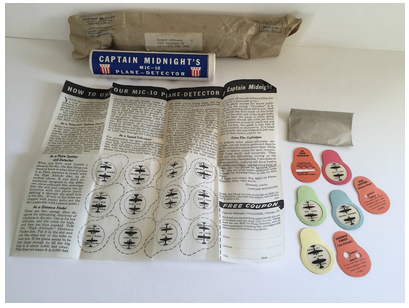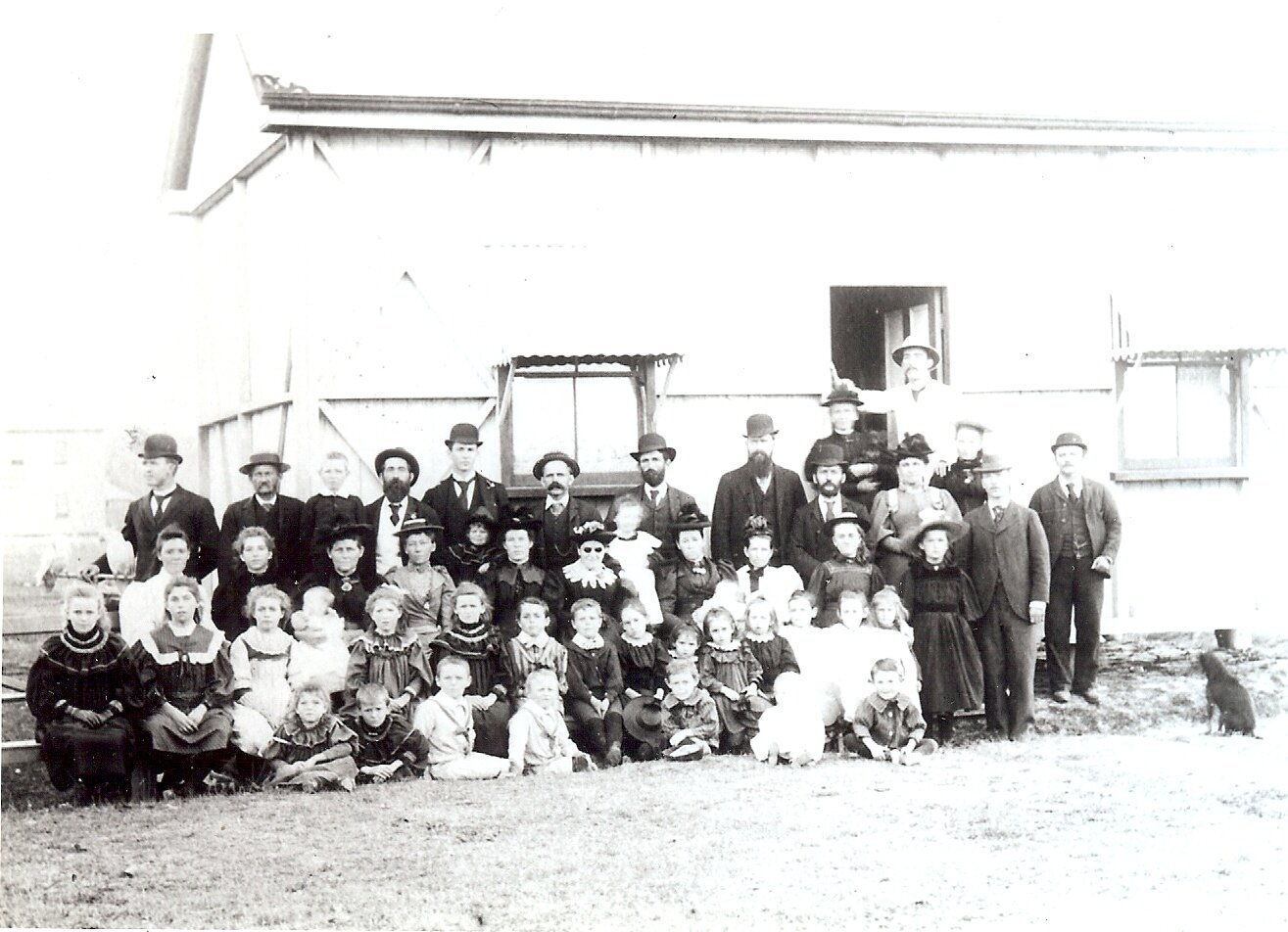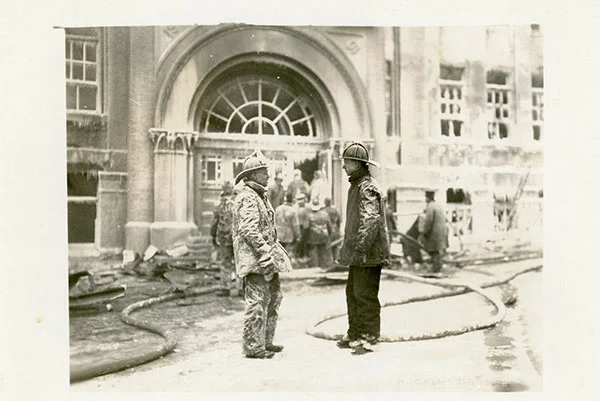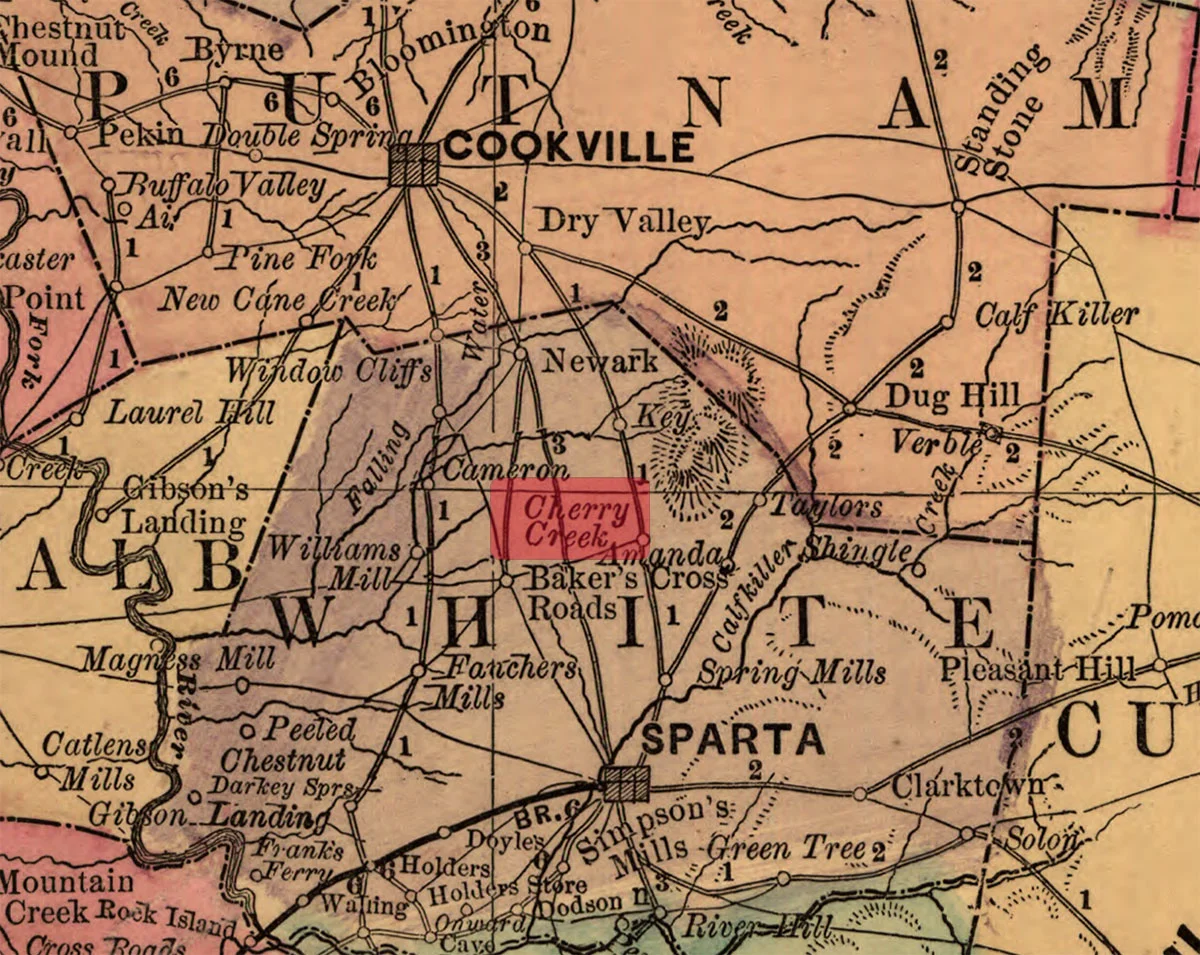Remember the plastic prizes in cereal boxes from the 1970s? I not so fondly recall fighting with my siblings over the choking hazard trinkets. I also mischievously recall pouring the cereal out, stealing the prize, then putting all the cereal back. I was a kid. What do you expect? I'm quite confident my siblings did the same as many a box was missing the prize. It was a lot of trouble to go to for a tiny, cheap toy that would break within days. Perhaps those large toy treasure boxes were the reason my mother switched to the single serve boxes void of reward.
By comparison, these 1930s and 1940s mail-in prizes are diamonds. Made to last, highly prized then and now, and typically worth the wait or effort to collect. Had I been raised in this era, I suspect I would have stalked the mailman every day anxiously awaiting these bits of brand loyalty that encouraged creativity, intrigue and activity.
"I was too young to have ordered any of these myself.
It's so interesting that mother [Hilda] sent away for them." - Dad
Some items my father recalled vividly, others he had only a vague recollection of and thinks they were placed in storage soon after they arrived. Lucky for me, these little trinkets waited over seventy years to be rediscovered and educate me a little more about my father's childhood.
We have been on a mission to help my father clear out the clutter, but when items are so small, it's easy to consider keeping them tucked away for another seventy years. But then reality sets in and you realize, they have not seen the light of day in decades, are just taking up space, and somewhere there is someone else who has been looking for this snippet of history and will treasure it far more than my father and I. With every thing we uncover, its destiny is up to dad, and more often than not (shockingly) he decides to sell or throw things away.
I suspect the audience for these items continues to dwindle as each generation's interest in the past fades, but with a little research, and a few runs on ebay or etsy, eventually, most everything can find a new home. The value of these items? It all depends on finding the right buyer at the right time. We have grown accustomed to being shocked at the price some collectibles fetch, and equally shocked when some don't sell despite how "cool" or special they seem to us.
Here are just a few of our discoveries:
The Original Cereal Prize
Kellogg's Corn Flakes offered the first breakfast cereal prize in about 1909. When you purchased two packages of Kellogg's CornFlakes, the cashier would give you The Funny Jungleland Moving Pictures Book. Kellogg's gave away this book for about 28 years with a few modifications over the years. By 1912, it is reported they had distributed over 2.5 million copies of the Jungleland books. Given the date, this one belonged to my grandmother.
Kelloggs Funny Jungleland Moving-Pictures Book Copyright 1909 by W.K. Kellogg. Patented Jan 15, 1907
Kelloggs Funny Jungleland Moving-Pictures Book Copyright 1909 by W.K. Kellogg. Patented Jan 15, 1907
Jack Armstrong Hike-o-Meter - The original pedometer?
Before we had FitBits, Jawbones and accelerometers in phones, there was - The Hike-o-Meter. It's purpose to: "Record your favorite hikes. Measure distance around lakes, map woods, roads, wilderness."
Jack Armstrong was the "all-American boy" and a radio show hero from 1933 to 1951. The character was one of the best-known endorsements for Wheaties and premiums were offered to radio listeners until the mid 1940s. The radio program started on WBBM in Chicago and then moved to CBS, NBC then ABC radio.
Wheaties Cereal Premium - Jack Armstrong Hike-o-Meter Measures the Miles for Hiking
Ovaltine's Little Orphan Annie's Secret Society
Such a timeless character! Little Orphan Annie was a comic created by Harold Gray and syndicated by Tribune Media Services. The name originated from a poem entitled "Little Orphant Annie" by James Whitcomb Riley.
In 1930, Little Orphan Annie was adapted to a 15 minute program that first aired in Chicago. It went national in 1931 and went off air in 1942. Ovaltine was the initial sponsor and during the program promoted these secret decoders (rings & badges) that could be obtained by redeeming proofs of purchase. These cipher disk pin backs are one of the most well-known examples of decoders for kids that used a simple Caesar cipher. Not surprisingly, the message was typically "Drink your Ovaltine."
The Little Orphan Annie Shadowettes were mechanical paper portraits of Sandy, Annie, Daddy Warbucks, Joe Corntassel, Mr. Silo and Mrs. Silo.
1935 1936 1937 Radio Orphan Annie's Secret Society Pin Backs & Shadowettes
Tom Mix Look Around Ring
Tom Mix was born in 1880 and died in 1940 at the young age of 60. He was a hero in more than 125 movies from 1910 to 1935. There was a Ralston Tom Mix radio show from 1933 to 1950 (that the original Tom Mix was not a part of) and Tom Mix comics were published from 1942 to 1953.
The Look-Around Ring has TM initials on each side and the front features a pair of crossed six-guns and two stars. There are two rectangular slots that when held to the eye can be looked through. Via the interior mirror, you can see objects at a 90 degree angle. It's the ultimate spy ring for a ten year old.
1946 Tom Mix Look Around Ring - Ralston Cereal Premium
Captain Midnight MJC-10 Plane Detector
Captain Midnight was an adventure radio serial broadcast from 1938-1949. The program was about Captain Jim "Red" Albright a World War I US Army pilot, code name Captain Midnight. When the show began he was a private aviator who helped people, but in 1940 when Ovaltine took over the show, he was recruited to a Secret Squadron that fought sabotage and espionage during the entry to World War II.
The program was sponsored by the Skelly Oil Company from October 1938-1940, then Ovaltine in the 1940s. The MJC-10 Plane Detector was a cardboard tube with "slides" featuring plane silhouettes of Allied and Axis aircraft.
I can only imagine kids across the country standing in their yard, head tilted to the sky, plane detector in hand trying to identify planes passing by. I wonder if there's an app for that now?
(Great source for more Captain Midnight Premiums is located here on the Radio Days website.)
Captain Midnight Plane Detector
Melvin Purvis Junior G-Man
The Junior G-Men was an American boys club during the late 1930s and early 1940s. It was started by Melvin Purvis, a former FBI agent who helped lead the manhunt on John Dillinger. He hosted a children's radio program in 1936 called "Junior G-Men" and listeners could join the club to receive badges, manuals & secret agent props. Purvis became the face of Post Toasties from General Mills in the last 1930s. The Junior G-Men club became popular in the US and Canada as an alternative to the Boy Scouts. (Sources: Biography Channel, Wikipedia)
1930s Post Toasties Melvin Purvis Junior G-Man Corps






































